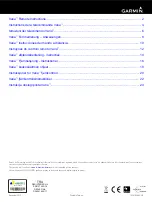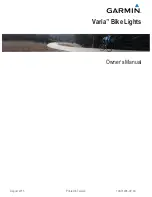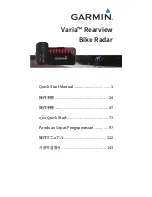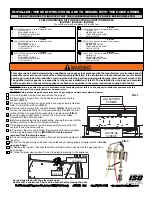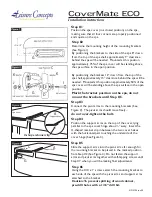
Handbook for the SX remote control Spectrograph Issue 1, 17/8/20
Methane absorption lines in the near-infrared spectrum of Saturn
Hydrogen line doubling from the orbital Doppler shifts in Beta Lyrae
Because the spectrograph uses a concave grating at a steep angle, there is a small amount of residual astigmatism in the
spectral image. Although astigmatism is normally undesirable, it can be quite useful for expanding the height of the spec-
trum from point sources. This makes the emission and absorption lines more readily visible, without the need to de-focus
the star image at the slit. As the astigmatism is somewhat variable with wavelength, the spectral height is at a maximum in
the blue and steadily reduces towards the infrared. This is clearly visible in the spectrum of Alpha Corona Borealis above.
For most practical purposes, this is of little importance, but many image processing programs include geometric correction
options that can be used to make the spectrum more uniform. A horizontal perspective correction in ‘Paint Shop Pro’ was
used to correct the Methane spectrum above.
Advanced adjustments for experienced users:
The height and resolution of the spectrum are both strongly affected by the angle of the small flat mirror in the spectrograph.
We try to optimise this setting to give best results, but you might want to experiment with the angle to achieve a different
spectral width or line shape. The theoretical ‘best angle’ is marked by a groove in the floor of the spectrograph, but a varia-
tion of two or three degrees in either direction, will change the spectrum in subtle ways. To make a change, slightly loosen
the countersunk M4 screw that is visible on the underside of the spectrograph. You can now slew the mirror holder slightly
to change its angle and then observe the results. Note that the focus of the spectrum will also change as the mirror is twisted,
so be careful to check that the camera is accurately in focus when checking the result of your adjustment. Multiple changes
to the spectrum will be seen, as follows: (1) The apparent height and taper of the spectrum (2) The curvature of the emission
and absorption lines (3) The definition of the lines (4) The start and end positions of the overall spectrum (5) The position of
the focal plane of the spectrograph. Clearly, you need to thoroughly check that all of these parameters are acceptable, before
re-tightening the mirror fixing screw.
Spectrograph specifications:
Basic design:
Self-collimating concave reflective grating spectrograph with a highly corrected flat field toroidal grating. Minimal attenua-
tion of near UV, due to mostly reflecting optics. Built-in guide camera and calibration source.
Grating specifications:
Groove pitch - 550 grooves per mm at centre of grating.
Blaze wavelength - 400 nM.
Spectral efficiency at 400 nM - Greater than 50%.
Useful spectral range - 340 to 900 nM
Useful grating aperture - 26 x 26 mm.



















